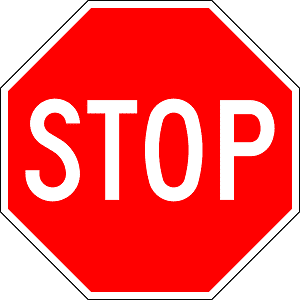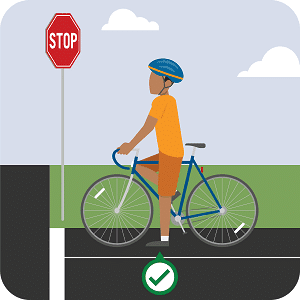STOP Sign 2025 USA. Stop signs are an essential part of traffic control in many countries, including the United States. On this page, we’ll explore the meaning, definition, example, shape, location, and color of Stop signs and permit test questions answers, so you can better understand their importance in traffic safety.
STOP Sign
The Stop sign is a vital traffic sign that plays a significant role in traffic control and safety on American roads. By understanding its meaning, definition, example, shape, location, and color, you can ensure that you’re following the rules of the road and doing your part to keep everyone safe. Remember to always come to a complete stop at a Stop sign, look both ways before proceeding, and yield to any pedestrians or vehicles already in the intersection.
Meaning and Definition of Stop Signs
The Stop sign is one of the most crucial traffic signs on American roads. Its meaning is simple yet essential – it indicates that you must come to a complete stop at the designated point on the road, usually marked by a white stop line. You must stop your vehicle and wait until it is safe to proceed.
The Stop sign is there to regulate traffic flow and increase safety on the roads. By stopping at Stop signs, drivers can avoid collisions with other vehicles or pedestrians and prevent accidents from happening.
Example of a Stop Sign
To better understand the use of Stop signs, let’s look at an example. Imagine you’re driving down a busy street and approaching an intersection with a Stop sign. You see the red octagonal shape of the Stop sign, which is hard to miss. You slow down and come to a complete stop behind the white stop line, looking both ways for any oncoming traffic or pedestrians. You then proceed through the intersection only when it is safe to do so.
Shape and Location of Stop Signs
The Stop sign is a red octagon shape with white letters spelling out “STOP.” This unique shape and color combination make it easily recognizable and distinguishable from other traffic signs. Stop signs are required by law to be at least 30 inches in diameter to ensure maximum visibility.
Stop signs are typically located at intersections, crosswalks, and places where there is a high risk of accidents. They are often used in conjunction with other traffic signs and signals to manage traffic flow effectively.
Color of Stop Signs
The color of the Stop sign is an important element that helps increase its visibility and importance on the road. The Stop sign is red, which signifies danger and the need to stop immediately. Red is also an attention-grabbing color that makes the sign easy to spot, even from a distance.
STOP Sign Question Answers Quiz
Points To Remember
- Always come to a complete stop: The Stop sign requires drivers to come to a complete stop at the designated point on the road, usually marked by a white stop line. Rolling through the Stop sign, or not coming to a complete stop, can result in a traffic violation and increase the risk of accidents.
- Look both ways before proceeding: After stopping at a Stop sign, it’s important to look both ways for any oncoming traffic or pedestrians before proceeding through the intersection. Failure to do so can result in collisions and other accidents.
- Yield to pedestrians and other vehicles: Stop signs often indicate that there may be pedestrians or other vehicles crossing the road. It’s important to yield to them and give them the right of way to prevent accidents and injuries.
- Pay attention to other traffic signs and signals: Stop signs are often used in conjunction with other traffic signs and signals to manage traffic flow effectively. It’s essential to pay attention to these signs and signals to ensure you’re following the rules of the road.
- Remember the consequences of not obeying Stop signs: Failing to obey a Stop sign can result in a traffic violation, fines, and points on your driver’s license. More importantly, it can also result in accidents and injuries, which can have far-reaching consequences.
By keeping these important things in mind, you can help ensure that you’re following the rules of the road and doing your part to keep everyone safe.
DMV Road Sign/Traffic Signal Practice Test
- DMV Road Signs and Meanings 2025
- DMV Road Signs Practice Test 2025 [with Explanation]
- Other Road Sings in the USA

